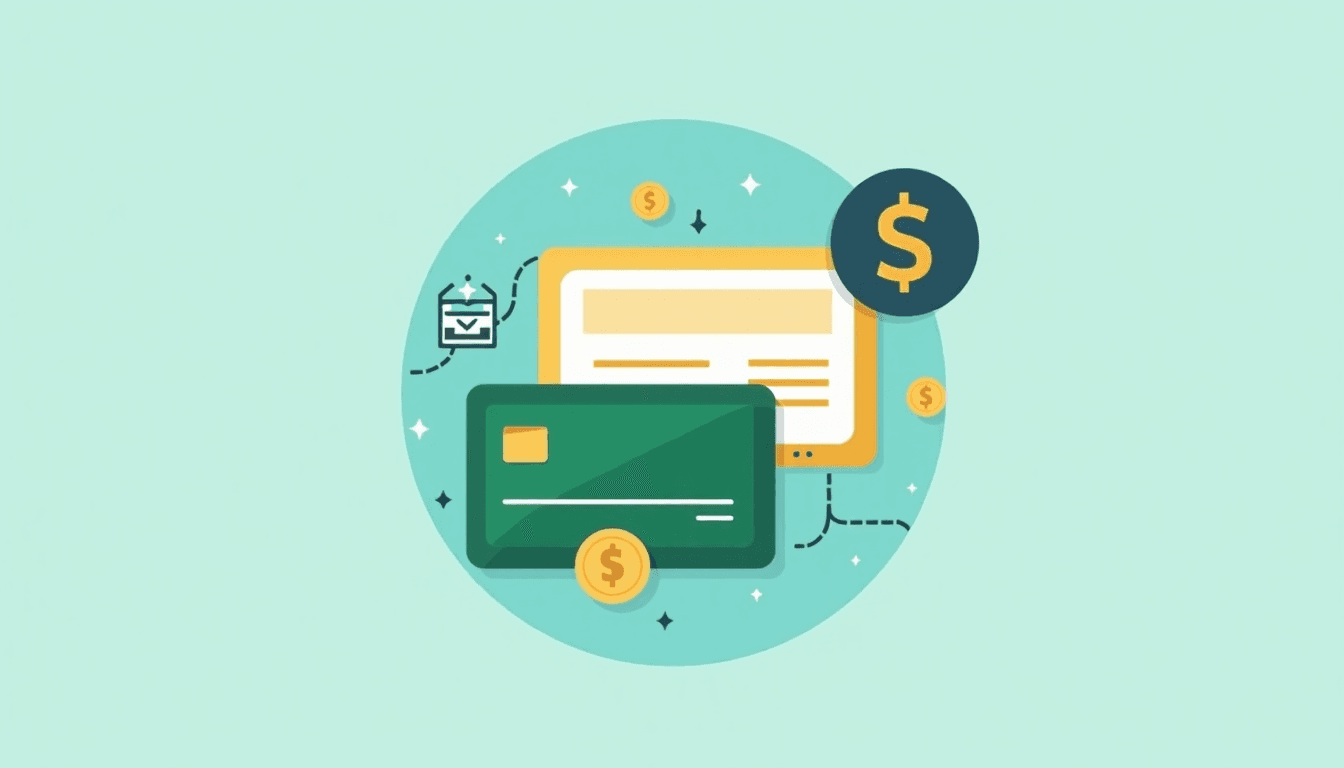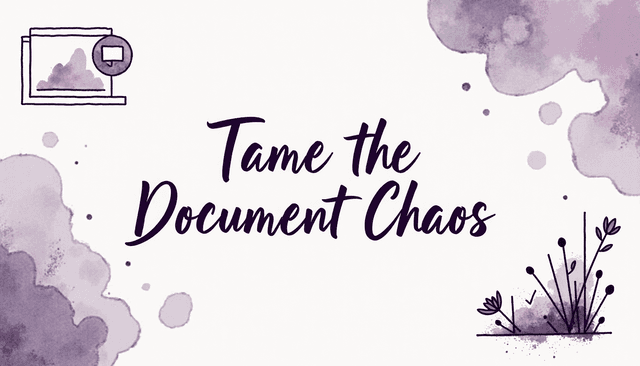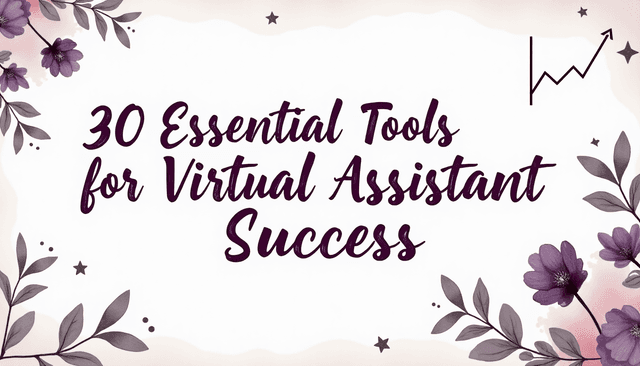Master Client Payments: How to Prepare Payments for Clients Efficiently
September 26, 2024 • 14 min read
Learn how to efficiently manage client payments as a virtual assistant. Explore traditional and modern payment methods, best practices, and security considerations.

As a virtual assistant, managing client payments is a crucial skill that can set you apart in the competitive world of remote work. Whether you're supporting small business owners, entrepreneurs, or larger organizations, efficient payment preparation is key to maintaining strong client relationships and ensuring smooth financial operations.
In this comprehensive guide, we'll explore various payment methods and best practices tailored for virtual assistants and office professionals in the digital age. From traditional options like checks and wire transfers to modern solutions such as EPC QR codes and bulk payment files, we'll cover the essential tools you need to streamline your payment processes and excel in online transactions.
By mastering these techniques, you'll not only save time but also demonstrate your value as a reliable partner in your clients' financial management. Let's dive in and discover how you can elevate your payment preparation game, allowing you to take on more clients and grow your virtual assistant business without compromising on quality or efficiency.
Introduction to Efficient Payment Preparation for Virtual Assistants
As a virtual assistant or small business owner in the digital economy, managing client payments efficiently can make or break your freelance career. Picture this: you're juggling multiple clients, each with their own payment preferences and schedules. Sound familiar? You're not alone in the world of remote work and online transactions.
In this comprehensive guide, we'll explore various payment preparation methods that can streamline your processes and save you precious time in your virtual business. From traditional options like checks and wire transfers to modern digital payment solutions such as EPC QR codes and bulk payment files, we've got you covered for all aspects of financial management.

Why does mastering payment processing matter for your freelance career? Consider Sarah, a VA who increased her client base by 30% after implementing efficient payment systems. Or Mark, an entrepreneur who reduced payment-related errors by 50% with the right digital tools. These aren't just numbers – they represent real business growth and client satisfaction in the world of virtual assistance.
Ready to transform your payment preparation game and boost your online business? Let's dive in and discover how you can:
- Simplify your payment workflows for seamless remote work
- Reduce errors and save time on financial tasks
- Enhance your professional image in the digital marketplace
- Scale your virtual assistant business effortlessly
Remember, the right payment method can be your secret weapon in delivering top-notch service to your clients in the competitive freelance economy. Let's get started on optimizing your payment processes!
Ready to revolutionize your payment processes? Sign up for PreAdmin.pro's waiting list today and get a serious discount on our game-changing platform for virtual assistants!
Understanding Your Client's Payment Needs in Remote Work
As a virtual assistant in the digital age, clear communication is your lifeline. It's not just about getting the job done; it's about building trust and long-term relationships with your clients in the online business world.
Start by having an open conversation about payment preferences for your remote services:
- Frequency: Monthly, bi-weekly, or per project? Align with your client's cash flow.
- Method: Traditional (checks, wire transfers) or modern digital payments (EPC QR codes, bulk payments)?
- Currency: Local or international? Consider exchange rates for global clients.
Remember, Sarah, a VA from Texas, lost a client because she assumed they preferred PayPal for online transactions. The client wanted direct bank transfers. Don't make the same mistake in your virtual business!
"Understanding your client's payment needs is as crucial as understanding their business needs in the digital economy." - John Doe, Veteran VA
Pro tip for freelancers: Create a simple payment preference form for new clients. This not only shows professionalism but also saves time in the long run and streamlines your invoicing process.
By aligning with your client's payment needs, you're not just preparing invoices; you're laying the groundwork for a smooth, professional relationship in the world of remote work. This attention to detail can set you apart in the competitive virtual assistant market and boost your freelance career.

Traditional Payment Methods: Tried and True Options for Virtual Assistants
As a virtual assistant or small business owner in the digital age, you need reliable ways to handle client payments for your remote services. Let's explore three traditional methods that have stood the test of time in the world of online transactions:
-
Checks: While less common in digital payments today, some clients still prefer checks. They're tangible and provide a paper trail. Pro tip for freelancers: Use mobile check deposit to save time and avoid trips to the bank, enhancing your virtual business efficiency.
-
Wire transfers: Ideal for large, one-time payments or international clients in the global marketplace. They're fast and secure, but watch out for fees. Many banks offer reduced fees for small businesses and virtual assistants, so it's worth asking to optimize your online income.
-
Credit card payments: A popular choice for recurring payments in the digital economy. They're convenient for clients and can help you get paid faster as a freelancer. Consider using a service like Square or Stripe to easily accept credit cards without complex setups, streamlining your virtual assistant services.
Remember, each client may have different preferences in the world of remote work. Be flexible and offer a mix of these methods to cater to various needs in your online business. By mastering these traditional payment options, you'll build trust with clients and keep your cash flow steady in your freelance career.
Next, we'll dive into modern digital payment solutions that can further streamline your processes in the virtual assistant industry.

Modern Digital Payment Solutions for Virtual Assistants
As a virtual assistant or small business owner in the digital age, staying up-to-date with modern payment solutions can streamline your operations and impress clients in the world of remote work. Let's explore three innovative methods for online transactions:
EPC QR Code Payments in Digital Transactions
EPC (European Payments Council) QR codes are game-changers for quick, error-free transactions in the virtual business world. Simply scan the code with a smartphone to initiate a payment. For VAs and freelancers, this means:
- Faster invoice processing for online services
- Reduced data entry errors in digital payments
- Enhanced client experience in remote work
To generate EPC QR codes for your virtual assistant business, use online tools like QR Code Generator.
Proxy Access to Client's Bank Account for Virtual Assistants
Proxy access allows you to manage payments without full account control, ideal for trusted freelancers. Here's how to set it up in your online business:
- Request limited access from your client for remote services
- Use bank-provided security tokens for digital transactions
- Set up two-factor authentication for enhanced security
Tip for virtual assistants: Always document your actions to maintain transparency in online financial management.
Bulk Payment Files for Efficient Online Transactions
Bulk payment files are a VA's secret weapon for managing multiple transactions in the digital economy. They're especially useful for businesses with numerous vendors or employees in remote work settings.
- Create a CSV file with payment details for your virtual services
- Upload to your client's bank platform for seamless processing
- Process multiple payments in one go, saving time in your freelance career
Many banks support bulk payments for online businesses, including Chase and Bank of America.
By mastering these modern digital payment solutions, you'll save time, reduce errors, and add value to your VA services in the competitive world of remote work and online transactions.

Best Practices for Payment Preparation in Virtual Assistant Services
As a virtual assistant or small business owner in the digital economy, mastering payment preparation is crucial for maintaining client trust and smooth operations in remote work. Here are key practices to implement in your online business:
-
Maintain Accurate Digital Records
- Use digital tools like spreadsheets or accounting software to track all online transactions
- Regularly reconcile accounts to catch discrepancies early in your virtual business
- Example: Set up a weekly review of all client payments and expenses for your freelance services
-
Double-Check Payment Details for Online Transactions
- Verify recipient information, amounts, and payment dates before processing digital payments
- Use a checklist to ensure all necessary details are confirmed for remote clients
- Tip for virtual assistants: Create a template for each client's recurring payments to reduce errors in online invoicing
-
Ensure Timely Payments in Your Freelance Career
- Set up digital reminders for upcoming due dates in your virtual assistant business
- Consider automating recurring payments when possible for efficient remote work
- Communicate proactively with clients about payment schedules in the online marketplace
Pro Tip for VAs: Implement a "four-eyes" principle where another team member reviews payments before they're sent. This extra step can significantly reduce errors and build client confidence in your digital services.
By following these practices, you'll streamline your payment processes, reduce stress, and free up time to focus on growing your virtual assistant business or serving more clients effectively in the world of remote work and online transactions.## Security Considerations: Safeguarding Your Clients' Financial Data in Digital Transactions
As a virtual assistant handling sensitive financial information in the online world, security should be your top priority. Here's how to protect your clients' data in remote work settings:
-
Secure Payment Platforms for Online Transactions: Use trusted, encrypted platforms like PayPal or Stripe for digital payments. These services offer built-in security features and fraud protection for virtual businesses.
-
Two-Factor Authentication (2FA) in Virtual Assistant Services: Implement 2FA on all accounts handling client data in your freelance career. This extra layer of security significantly reduces the risk of unauthorized access in online financial management.
-
Data Encryption for Remote Work: Encrypt sensitive files before storing or sharing them in your virtual business. Tools like VeraCrypt or BitLocker can help secure your clients' financial information in the digital economy.
-
Regular Security Audits for Online Businesses: Conduct monthly security checks on your systems used for remote services. Update software, change passwords, and review access permissions to maintain a secure environment for digital transactions.
-
Client Education on Digital Security: Teach your clients about phishing scams and the importance of strong passwords in online payments. A well-informed client is less likely to fall victim to fraud in the virtual marketplace.
Remember, a single security breach can damage your reputation and business in the competitive world of virtual assistance. By implementing these measures, you'll build trust with your clients and set yourself apart as a responsible, security-conscious virtual assistant in the digital age.
Pro Tip for Freelancers: Consider investing in cyber liability insurance. It can protect your online business financially if a data breach occurs, giving you and your clients peace of mind in the world of remote work and digital transactions.

Streamlining the Payment Process for Virtual Assistant Services
Efficient payment processes are crucial for virtual assistants and small business owners in the digital economy. Here's how to streamline your payment workflow for remote work:
Automating Recurring Payments in Online Transactions
Set up automatic payments for regular clients in your virtual business. This saves time and ensures consistent cash flow in your freelance career. For example, use PayPal's recurring payment feature or your client's preferred banking system for digital transactions.
Leveraging Accounting Software Integrations for Virtual Businesses
Connect your payment systems with accounting software like QuickBooks or Xero for efficient financial management. This integration in your online business:
- Reduces manual data entry for remote services
- Minimizes errors in digital payments
- Provides real-time financial insights for your virtual assistant work
Many VAs report saving 3-4 hours per week by using integrated systems in their freelance career.
Implementing Payment Reminders for Remote Clients
Establish a system for payment reminders in your virtual assistant services:
- Set up automated email reminders for online invoices
- Use project management tools like Asana or Trello to track payment due dates in your digital workflow
- Create a simple spreadsheet to monitor upcoming payments for your remote work
Pro tip for freelancers: Send friendly reminders 3-5 days before the due date to maintain positive client relationships in the online marketplace. For more tips on effective reminders, check out our guide on creating effective reminders.
By streamlining these processes, you'll free up time to focus on growing your virtual business and serving your clients better in the competitive world of remote work and digital transactions.
Conclusion: Mastering Payment Preparation for Virtual Assistant Success
As a virtual assistant or small business owner in the digital age, mastering payment preparation is crucial for your success in remote work. Let's recap the key methods we've explored for efficient online transactions:
- Traditional options: Checks, wire transfers, and credit card payments
- Modern digital solutions: EPC QR codes, proxy access to client accounts, and bulk payment files
Each method has its strengths in the virtual marketplace, and the right choice depends on your client's needs and preferences in the world of online business. For instance, EPC QR codes offer a quick, error-free option for tech-savvy clients, while proxy access might suit long-term partnerships with high trust in your freelance career.
Remember, efficiency is key in our field of virtual assistance. By choosing the most suitable payment method for each client, you'll:
- Save time on administrative tasks in your remote work
- Reduce errors in digital transactions
- Improve client satisfaction in the online marketplace
- Free up resources to grow your virtual business
As you implement these strategies, keep security at the forefront of your digital services. Always protect your clients' financial information and stay updated on the latest payment technologies in the ever-evolving world of online transactions.
By streamlining your payment processes, you'll position yourself as a reliable, professional virtual assistant in the competitive digital economy. This efficiency will allow you to take on more clients and scale your business without compromising on quality. For more tips on growing your VA business, check out our article on how to maximize earnings with packages.

Additional Resources for Virtual Assistants
Boost your payment preparation skills with these valuable resources for your online business:
-
Payment Processing Tools for Digital Transactions
- Stripe: Ideal for online payments and invoicing in virtual assistant services
- QuickBooks: Comprehensive accounting software with payment features for remote work
- Wave: Free invoicing and accounting for small businesses in the digital economy
-
Security and Efficiency Guides for Online Financial Management
- PCI DSS Compliance Guide: Essential reading for handling credit card payments in virtual businesses
- NACHA Operating Rules: Key information for ACH transfers in digital transactions
-
Virtual Assistant Communities for Networking and Learning
- International Virtual Assistants Association: Network and learn from fellow VAs in the online marketplace
- VA Networking: Forum for virtual assistants to share tips and experiences in remote work
-
Time Management and Productivity Tools for Freelancers
These resources will help you streamline your payment processes, enhance security, and grow your virtual assistant business in the competitive digital landscape. Remember, staying informed and using the right tools can set you apart in this competitive field of online work. For more essential tools for virtual assistants, check out our guide on essential tools for VAs.
Ready to revolutionize your payment processes in the world of virtual assistance? Sign up for PreAdmin.pro's waiting list today and get a serious discount on our game-changing platform for digital entrepreneurs!
Frequently Asked Questions (FAQs) for Virtual Assistants on Payment Preparation
-
Q: What's the most secure way to handle client payments as a virtual assistant? A: The most secure methods include using encrypted platforms like PayPal or Stripe, implementing two-factor authentication, and following PCI DSS guidelines for credit card transactions in your online business.
-
Q: How can I minimize payment errors in my virtual assistant services? A: Double-check all payment details, use accounting software integrations, and consider implementing a "four-eyes" principle where another person reviews transactions before they're processed in your remote work.
-
Q: What should I do if a client's payment is late in my freelance business? A: Send a polite reminder, check if there were any issues with the invoice or payment method, and consider implementing late payment fees in your virtual assistant contracts to encourage timely payments.
-
Q: How often should I review my payment processes in my online business? A: Conduct a thorough review of your payment processes at least quarterly, and stay updated on new payment technologies that could benefit your virtual assistant services.
-
Q: Can I accept cryptocurrency payments as a virtual assistant? A: Yes, you can accept cryptocurrency, but ensure you understand the tax implications and volatility risks. Use reputable exchanges and consider immediately converting to fiat currency to minimize risk in your digital transactions.
These FAQs address common concerns in the world of virtual assistance and online payments, helping you navigate the complexities of financial management in your remote work career.


